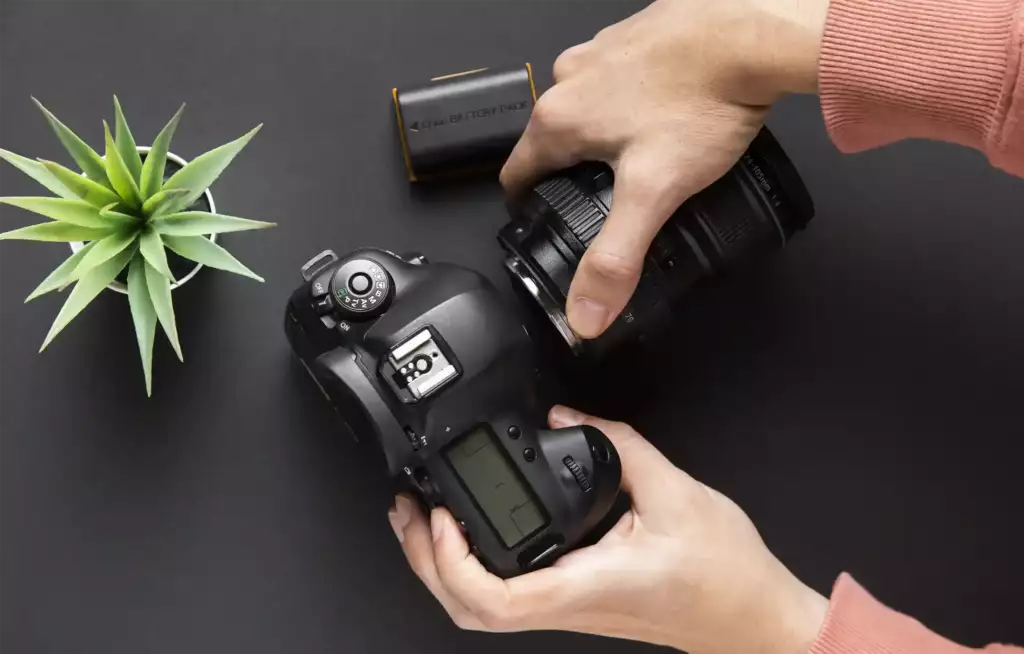
The Best Camera for Product Photography You Must Have
A friend who owned a small e-commerce business, selling handcrafted jewelry constantly struggled with getting her products to stand out online, despite having unique and beautifully designed pieces. It wasn’t until she discovered the best camera for product photography for her jewelry that she noticed a significant change. Suddenly, the intricate details of her jewelry—like the delicate etching and the shine of the gemstones—were vividly captured, and her sales skyrocketed. This transformation underscored a simple truth: in the world of e-commerce, first impressions matter—and product images are often the first thing that catches a potential buyer’s eye.
Crisp, detailed, and high-quality photos can make or break a sale, which makes choosing the best camera for product photography essential. Whether you’re a professional photographer or a business owner trying to capture your products, the right camera can elevate your images to new heights.
In this guide, we’ll explore what makes for the best camera for product photography, review the top 5 cameras for the job, and share tips for enhancing your product photos with any camera. Let’s dive in!
Key Features to Consider in a Camera for Product Photography
When selecting a camera for product photography, several features play a crucial role in determining image quality and usability. Here are some key aspects to consider:
1. Image Resolution
In product photography, clarity and detail are everything. The higher the camera’s resolution, the better it can capture intricate details like textures, colors, and small elements of your product. Look for a camera with at least 20-30 megapixels for crisp, professional images. For example, the Canon EOS R5 offers an impressive 45 megapixels, making it ideal for capturing product details.
2. Lens Compatibility
Choosing a camera that allows interchangeable lenses offers versatility for various product shots. A macro lens is essential for capturing fine details like fabric texture or small jewelry, while a wide-angle lens can be useful for shooting larger products. Cameras with wide lens compatibility, like the Sony Alpha A7R IV, give photographers the flexibility to adapt to different types of products.
3. Color Accuracy
Accurate color representation is crucial when photographing products, especially when selling online. If your product colors are off, it may lead to customer dissatisfaction. Cameras with good white balance controls and color profiles help ensure the product looks true to life. The Fujifilm GFX 100S is renowned for its exceptional color accuracy, making it a top choice for product photographers.
4. Low Light Performance
Even in well-lit studio environments, some products benefit from strong low-light performance to maintain sharpness and clarity. Look for cameras with a high ISO range and good low-light performance to ensure your product looks stunning, regardless of lighting conditions.
5. Other Key Features
Other important features include autofocus, which ensures sharp product images, and the ability to shoot in RAW format for post-production editing flexibility.
Top 5 Best Cameras for Product Photography
Now that we know what to look for, here are the top 5 cameras for product photography in 2024:
1. Canon EOS R5
The Canon EOS R5 is a powerhouse in product photography, offering a 45-megapixel full-frame sensor for stunning resolution. Its Dual Pixel CMOS AF II ensures rapid and accurate focus, making it perfect for capturing minute product details. With 8K video capability, you can also create high-quality product videos to complement your photos.
- Price: $3,899 (body only)
- Resolution: 45 MP
- Low Light Performance: Excellent, ISO range up to 51,200
Example: A jewelry photographer can capture the intricacies of gemstones and metalwork with unmatched clarity using the EOS R5, while the camera’s autofocus locks in on even the smallest subjects.
2. Sony Alpha A7R IV
Known for its high resolution and versatility, the Sony Alpha A7R IV features a 61-megapixel full-frame sensor, one of the highest in the market. Its superior dynamic range and fast autofocus make it perfect for detailed product shots, especially in controlled lighting environments.
- Price: $2,999 (body only)
- Resolution: 61 MP
- Low Light Performance: Good, ISO range up to 32,000
Example: Clothing brands often rely on the A7R IV for its ability to capture texture and fabric details, making it easy to show the quality of their products online.
3. Nikon Z7 II
The Nikon Z7 II is another strong contender, with a 45.7-megapixel full-frame sensor and a robust EXPEED 6 image processor for high-speed shooting and superb image quality. Its wide autofocus coverage ensures that even off-center subjects are in sharp focus, making it a great option for lifestyle product shots.
- Price: $2,999 (body only)
- Resolution: 45.7 MP
- Low Light Performance: Good, ISO range up to 25,600
Example: A furniture store could benefit from the Z7 II’s ability to capture wide, high-resolution product images with consistent color and sharpness throughout the frame.
4. Fujifilm GFX 100S
If you need the highest image quality possible, the Fujifilm GFX 100S with its 102-megapixel medium format sensor delivers unmatched resolution and color accuracy. It’s perfect for high-end product photography, like luxury goods and art.
- Price: $5,999 (body only)
- Resolution: 102 MP
- Low Light Performance: Excellent, ISO range up to 12,800
Example: A high-end cosmetics company could use the GFX 100S to showcase their products with exceptional detail, color accuracy, and texture, giving customers a true sense of their quality.
5. Panasonic Lumix S1R
The Panasonic Lumix S1R offers a 47.3-megapixel sensor, along with excellent in-body image stabilization and low-light performance. It’s a great all-rounder for product photography, especially in situations where handheld shooting is required.
- Price: $3,699 (body only)
- Resolution: 47.3 MP
- Low Light Performance: Good, ISO range up to 51,200
Example: A small business owner can use the Lumix S1R to shoot high-quality product photos for e-commerce listings without needing a large studio setup.
Budget-Friendly Options
Not everyone needs a high-end camera to start product photography. Here are some excellent budget-friendly cameras:
1. Canon EOS Rebel T7
The Canon EOS Rebel T7 is an affordable entry-level DSLR that still delivers 24.1-megapixel resolution. While it may not have all the bells and whistles of a full-frame camera, it’s great for beginners.
- Price: $499 (with kit lens)
- Resolution: 24.1 MP
- Low Light Performance: Decent, ISO range up to 12,800
2. Nikon D3500
The Nikon D3500 is another fantastic entry-level DSLR with 24.2 megapixels. It’s lightweight and easy to use, making it perfect for small-scale product photography.
- Price: $449 (with kit lens)
- Resolution: 24.2 MP
- Low Light Performance: Good, ISO range up to 25,600
3. Sony Alpha A6100
If you prefer a mirrorless camera, the Sony Alpha A6100 offers 24.2 megapixels and excellent autofocus for product photography. It’s one of the best-value mirrorless cameras on the market.
- Price: $748 (body only)
- Resolution: 24.2 MP
- Low Light Performance: Good, ISO range up to 32,000
Choosing the Right Camera Based on Your Needs
When selecting a camera, consider factors such as your budget, the scale of your photography, and the type of products you are shooting. For instance, high-end product photographers working with luxury goods might need a medium format camera like the Fujifilm GFX 100S, while a small business owner might find the Nikon D3500 sufficient for shooting product listings.
Tips for Better Product Photography with Any Camera
Even with the best camera, the key to stunning product photos lies in your shooting technique. Here are some tips to get the best shots:
1. Lighting Setup
Good lighting is crucial in product photography. Use softbox lighting or natural light with diffusers to eliminate harsh shadows and highlight your product’s features.
2. Use a Tripod
A tripod is essential to avoid blurry photos and maintain consistent framing. This is especially important for smaller products where slight movement can ruin the shot.
3. Post-Processing
Enhance your product photos using editing software like Adobe Lightroom. Correct colors, adjust exposure, and remove blemishes to ensure the product looks its best.
4. Backgrounds and Angles
Use clean, neutral backgrounds to keep the focus on your product. Experiment with different angles to highlight the product’s key features and dimensions.
Conclusion
Choosing the best camera for product photography is a personal journey that depends on your unique needs, goals, and budget. Whether you’re a professional aiming for the precision of a high-resolution medium format camera or a small business owner in India trying to capture stunning product images with an affordable DSLR, there’s a perfect match for you.
Think of how my friend’s business took off once she found the right camera—it’s all about showcasing your product’s true essence. By considering essential features like image resolution, lens compatibility, and color accuracy, you can create photos that not only attract customers but also build trust and drive sales.
Don’t underestimate the power of quality product images. Start capturing professional photos with one of the cameras from this guide, and see the impact on your business and photography skills. You might be surprised just how far the right camera can take you!



